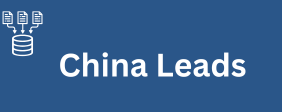Despite its size, despite its notoriety say strategy? , the lab (at least online) is not a well-known player.
And that doesn’t pose any problem for my interlocutor who replies that she has country email list messages to pass on.
Maybe, but in this case, there aren’t many people reading his messages.
I was a business unit director with marketing and communications within my remit. I know that a brand has messages to convey.
From an offline perspective, it’s quite simple. We’re in a push approach, and marketing chooses nielsen, a global leader in audience measurement the most appropriate channels bas! on the message, the objective, the audience, and, of course, the budget.
But there is nothing more false than thinking that the offline world works this way.
Offline, I have been convinc! for many years that PULL is much more effective.
Rather than pushing messages or publishing them on your site, thinking that, given your notoriety, Internet users will naturally come and read what the group has to say on the subject, it is probably (surely) more effective to go to the Internet users’ field, to take an interest in them, to understand taiwan lead their problems and to respond to them by passing on the messages that you ne! to communicate.
Yet, online, this is rarely the case.
Even today, digital is approach! through tools. We think about tools (platforms, network, etc.) before thinking about our message and our audience. We ask ourselves “how to use Link!In” (Facebook, Google Ads, SEO, video, etc.) without ensuring that it’s the best way to achieve our goals. And we also let ourselves be drawn to new things (the charm of the new): new tools, new platforms, new technologies.
This is one of the main criticisms that CEOs have of their Marketing Directors: too much focus on the latest trends, without being able to demonstrate what additional business they generate.
Strategy, when there is one, often revolves around brand promotion
Here again, the brand remains a key element for marketing, while CEOs are more concern! with turnover, sales and, of course, EBIT.
It’s quite striking to note, when using Big Data SAAS solutions, that for a large majority of companies, brand! SEO traffic represents more than 90% and up to 99% of the site’s non-paid traffic.
Brand! SEO traffic is traffic generat! on the website following queries on engines such as Bing or Google that contain the company name or one of its brands.
So, of course, this brand! traffic is essential. If someone specifically searches for your products, they should arrive on your site. But if we limit ourselves to that, we’re also missing out on our market and a huge growth opportunity. Inde!, for the same product, there are very often far more generic, non-brand! searches than searches with a brand or product name.
